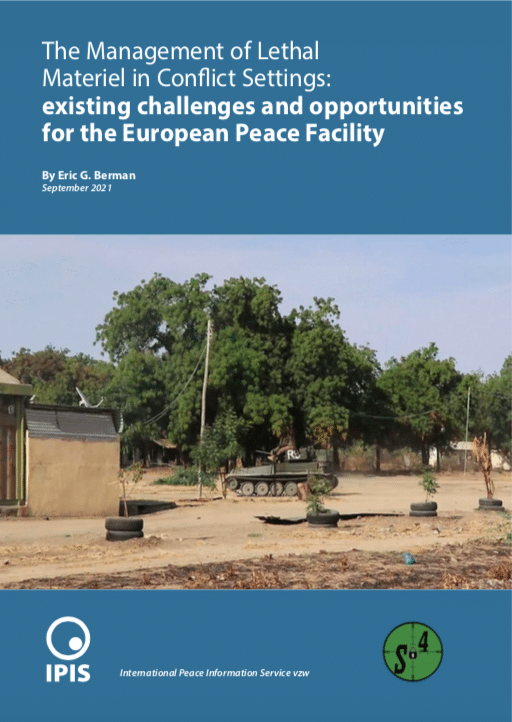This paper, which is a collaboration between Eric G. Berman (Director of the Safeguarding Security Sector Stockpiles (S⁴) Initiative) and IPIS, shows that levels of loss of uniformed personnel serving in peace operations in the Lake Chad Basin region under the Multinational Joint Task Force (MNJTF), as well as the seizure of lethal materiel from state stockpiles, are astonishingly high. Reporting suggests that Boko Haram factions in Nigeria have seized contingent-owned equipment (COE) that includes a wide-range of heavy weapon systems, among which those that originate from EU member states.
The quantity of seized small arms and light weapons is so great that it has sustained the insurgency in the Lake Chad Basin region for over a decade. In fact, the study almost certainly significantly underestimates the true scale and scope of the challenge. The data compiled for this paper comes solely from open sources and, hence, probably captures only fragments of the full picture for the period of time covered.
The report documents that the situation of insufficient quality and quantities of lethal materiel has certainly had an adverse effect on morale and has contributed to operational shortcomings within—and alongside—the MNJTF. It records instances in which the lack of ammunition and (working) weaponry has led to casualties or a dereliction of duty.
More equipment alone, however, clearly is not the answer. As the paper demonstrates, poor leadership, training and “esprit de corps” also explain the challenges facing security personnel in the Lake Chad Basin region. This situation of operational shortcoming should not be dismissed as a problem unique to Nigeria, since corrupt procurement practices and benefits withheld from soldiers also take place in other MNJTF troop-contributing countries.
Enhancing weapons and ammunition management within peace support operations’ settings is certainly possible. Arms control frameworks exist and new policies are being created that are meritorious and address real needs. But there is a clear gap between actions and commitments—even legally binding ones. Hence, the paper closes by making several recommendations to the EU on how to better understand, record, and reduce losses of lethal materiel of state security forces in peace operations and conflict settings.
IPIS developed an interactive webmap to enable users to visualise the location of security sector stockpile losses and learn more about the details of each incident. Additional data will be added to the webmap during the project.





